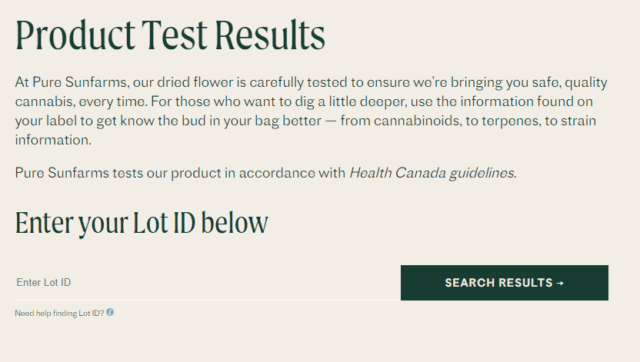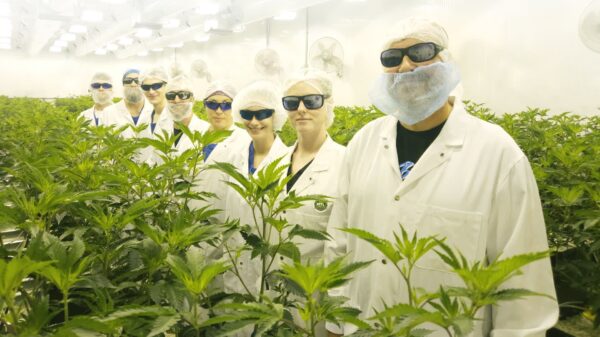There’s a lingering concern of “static” potency labelling in Canada’s weed industry following a recent reminder from the federal health agency.
Pure Sunfarms, a cannabis business owned by Village Farms International, Inc. (TSX: VFF) (Nasdaq: VFF), is continuing its call for transparent potency labelling and as of Monday, the B.C.-based company is offering online access to its dried flower test results on a lot-by-lot basis.
It’s important to have product information available to consumers and retailers, says CEO Mandesh Dosanjh
“We’re making it easy for those who want to dig a little deeper,” he says in a statement.
Cannabis Licence Holders Update: Displaying THC and CBD Content on Dried Cannabis Product Labels and Kief pic.twitter.com/TXODLSJlXL
— Fox D Consulting Inc. (@FoxDConsulting) August 10, 2021
Last Tuesday, Health Canada reminded licensed producers that labels showing THC and CBD potency must reflect laboratory tests for each lot.
“While the [Cannabis] Regulations are not prescriptive regarding the determination of accurate potency of a lot for dried cannabis products, the certificate of analysis (COA) is the most accurate estimate of that lot’s actual cannabinoid content when conducting testing using a validated method on a representative sample of the lot,” reads the statement from Health Canada.
That issue was raised by Pure Sunfarms earlier this year in a complaint to Health Canada over how Canopy Growth Corp. (TSX: WEED) is labelling of its TWD line, specifically about static potency labelling.
CEO Mandesh Dosanjh argued it was highly unlikely that 18 batches of Canopy’s weed had come in at exactly 20 per cent THC, and he told BNN Bloomberg rules needed to be clear to avoid ambiguity.
Read more: Pure Sunfarms posts strong growth, eyes US expansion
Static labelling could continue without accountability
While the labelling reminder seems to be a response to the Pure Sunfarms complaint, Dosanjh’s recent blog post emphasized a need for trust and accountability in the legal market.
On Sunday, he again stressed the urgency for dynamic labelling after Health Canada’s statement because some licensed producers are “not playing by the rules” and are “cutting corners” on potency labelling.

Customers can look up dried flower test results (COAs) from Pure Sunfarms weed. Screenshot by Kathryn Tindale
“Some are currently applying a static approach to their potency labelling, where a mid-point is taken from test results across batches, and will likely continue to do so if they are not held accountable,” he writes.
Potency is one of the main factors influencing consumer purchases, he notes, and the industry has to demonstrate its reliability.
No company was named in the blog post itself, but Dosanjh wondered if producers would “do the right thing” or will profit be prioritized over transparency.
“Potency labelling should not be static, it should be dynamic, just like the plant,” he argues.
“We will continue to stand up and do what’s right for consumers, but we can’t do it alone. We need our regulators, retailers, provincial boards and fellow producers to walk the walk. It’s the consumer’s trust and safety that’s at stake.”
Follow Kathryn Tindale on Twitter
kathryn@mugglehead.com














